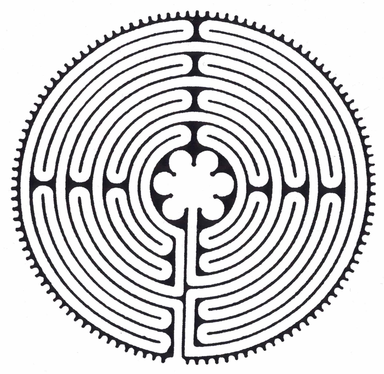Our Interfaith Labyrinth
The Community Interfaith Labyrinth, located on Northminster's north grounds, was dedicated in 2008 by the Troy Interfaith Group. It is a symbol of the peace and harmony between various religious traditions in our community.
The Interfaith Labyrinth is open year-round for all to walk the path and meditate, pray, dream, find peace, or ponder.
The Interfaith Labyrinth is open year-round for all to walk the path and meditate, pray, dream, find peace, or ponder.
WelcomeAll are welcome to come and walk the labyrinth.
The labyrinth is available any time. If you have a group, just call ahead to book a time to stay socially distant from others. No charge to walk the labyrinth, but donations for its upkeep are welcome. |
A Labyrinth Is...
A pathway that may become a mirror for our own lives and metaphor for our spiritual journey.
A circle and a spiral, each a powerful and ancient symbol of unity, wholeness and transformation. A tool of spiritual growth, healing and transformation of heart, body, mind and spirit. |
Listen to Your BodyDoes it want to walk, dance, skip or run the labyrinth? You may even want to sit quietly in a particular place for a time.
|


